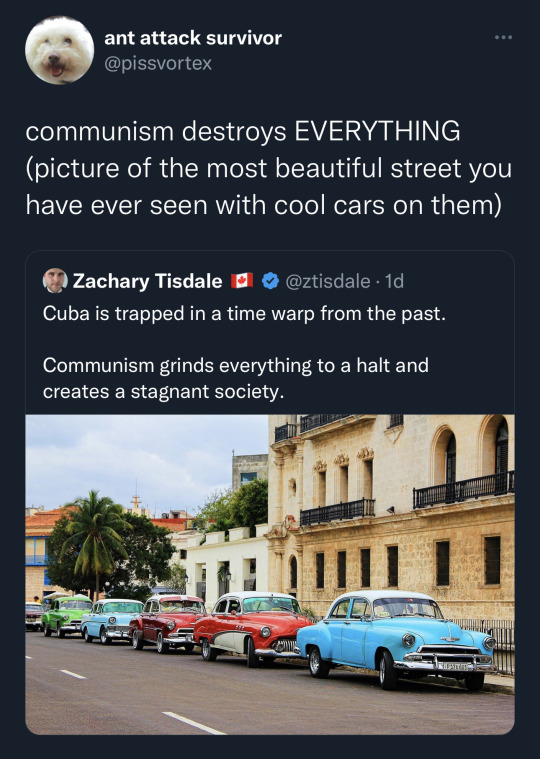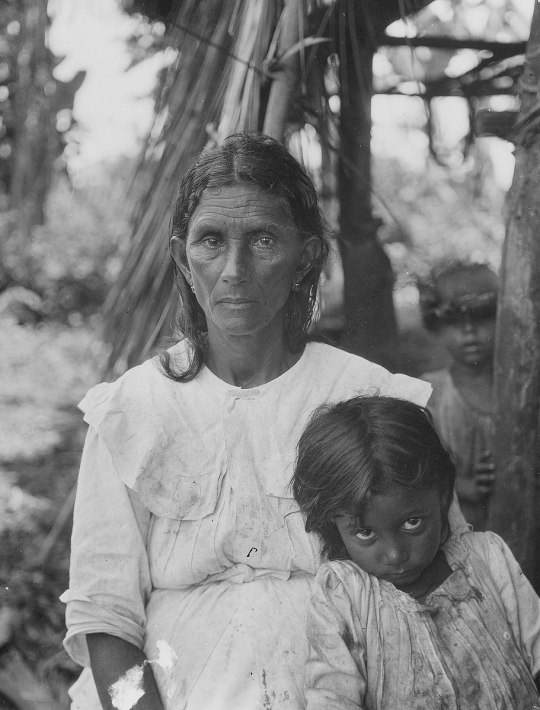#cuban history
Text
On This Day In History
May 20th, 1902: Cuba gains independence from the United States.
94 notes
·
View notes
Text

#cubatravel#cubase#cuban revolution#cubanosenmiami#cubansandwich#georgia#usa#united states#florida#south carolina#cuban#fidel castro#che guevara#cuban food#cuban doll#cuban missile crisis#cuban history#independent#kenya#actorslife#haiti#cuban lance#communism#anarchism#antifascism#socialist#revolution#anarchocommunism
107 notes
·
View notes
Text

A revolutionist to the end, who inspired those that succeeded in the end!
🐴🇨🇺🌿
#history#rosa castellanos#cuba#la bayamesa#historical figures#caribbean history#cuban revolution#military#ten years war#field hospitals#cuban history#latina#afro cuban#grl pwr#caribbean#latin america#black history#girl power#revolutionist#historical women#black excellence#strong women#women empowerment#womens history#afro latina#role model#1800s#early 1900s#nickys facts
6 notes
·
View notes
Photo

GALLERYYUHSELF - JANUARY 9th 2023 GUAMA TV DOCUMENTARY FILM go online for FREE viewing on our youtube channel - subscribe here so you don't miss it: https://www.youtube.com/channel/UCXZ3PIPXKu2xuMJUusZqAPg
The OFFICIAL VIP screening will be held in Barbados first before it gets posted online.
GUAMA the 22-minute TV Documentary version tells the tale of the often unsung hero - the Great Cuban Taino Chief Guama, and leaves you wanting more,
Hatuey (Supreme Taino Chief in Cuba in the rebellion against the Spaniards in 1512)Caonabo & Mayneri (the destroyers of the first Spanish settlement of La Navidad in Hispaniola)Mabey (Hispaniolan Taino leader who fought Spaniards in Cuba)Luquillo (one of the last Taino Chiefs in Puerto Rico to wage war against the Spaniards)Guayacayex (Taino Chief in Cuba who successfully massacred the Spaniards in 1510 in a revenge attack for Spanish atrocities) Guatiguana (the first Taino Chief in Hispaniola to organize a rebellion against the Spaniards)Guarocuya (Enriquillo - leader of a Taino rebellion against the Spaniards in Hispaniola)Agueybana II (leader of the Taino Rebellion of 1511 in Puerto Rico)
Instagram also @firstnationsproductions - the ONLY grassroots Caribbean 100% owned and operated Indigenous film company.
Also, visit our website at www.eagleclanarawaks.com to learn more about all of our unique and unprecedented local, regional, and international Indigenous actions and enterprises.
#galleryyuhself/Guama#galleryyuhself/documentary films#galleryyuhself/Caribbean indigenous film company#galleryyuhself/film#tumblr/Guama#tumblr/Tiano Chief#tumblr/Tiano peoples history#tumblr/Cuba#tumblr/first nations#Guama#documentary films#indigenous film production company#first nations#history#native perspective#taino#cuban history
23 notes
·
View notes
Text



Cuban Social vol VI nr. 5 (mayo 1921)
#cuba#cuban#cubano#cuba in the 1920s#real cuba#cubans#cuban history#colonial cuba#cubanos#cubanas#cubana
5 notes
·
View notes
Text

Native woman with children
Baracoa, Cuba, 1919
rayeshistory.com
4 notes
·
View notes
Text
Fulgencio Batista is one example among many of people with mixed heritage who did not proclaim himself Black in any way, shape, form, or fashion:
Fulgencio Batista is an example of many things. Of the kind of leaders that the United States sponsored under the quasi-annexation the Platt and Teller Amendments secured. Of the kind of person who has mixed ancestry but did not consider himself Black (his ancestors were Black, Chinese, and Taino, as well as white, respectively). His regime was a brutal corrupt thing that had limited to no popular appeal, hence the ability of a relatively weak and puny movement led by Fidel Castro to depose it.
Batista also 'recruited' Haitian laborers in the sugar industry called Braceros who are in that nebulous 'not quite slavery' concept much like US sharecroppers in the Deep South who did live on cotton plantations and worked themselves to the bone in a region whose economy was very much reliant on their labor.
3 notes
·
View notes
Photo

“CUBAN REBEL EXILES,” Vancouver Sun. February 22, 1933. Page 7.
----
Threats of revolt against the rule of President Gerardo Machado in Cuba are heard often in Havana these days and many of the rumors say that this group, now in exile in Florida, is planning some action, particularly since reports say Mario Menocal (upper right) flew to Cuba to head a new revolutionary force. In the group are (from left): First row: General Menocal. who led an unsuccessful revolution in 1931; Dr. S. Verdeja, Dr. M. Fraga. Second row: E. Arguellas, R. Menocal and F. Arguellas. Upper row: R. Del Viro, E. Arguellas and Mario Menocal.
#havana#cuban exiles#mario garcia menocal#president of cuba#revolutionaries#cuban history#the great depression
2 notes
·
View notes
Photo

Raising 'Em In Hotbeds
September 25, 1906
Secretary of War William H. Taft cultivates his Presidential Boom Plant in Cuba; Secretary of State Elihu Root grows his in South America.
The caption reads 'Can the secretaries transplant them in their native land?'
Taft and Root were both considered strong presidential candidates, and if their work in Cuba and South America paid off, it would hopefully serve to enhance their reputations even more.
See Also: William Howard Taft; Elihu Root
From Hennepin County Library
Original available at: https://digitalcollections.hclib.org/digital/collection/Bart/id/6849/rec/253
#Charles Bartholomew#political cartoon#William Howard Taft#Elihu Root#american occupation of cuba#Cuban History#south american history#1908 Presidential Election
2 notes
·
View notes
Text
My latest documentary for CBC Radio is an idea I've been working on for over a decade. The story of a cigar, from seed to roller, and what tobacco means to Cuban culture, history and society.
1 note
·
View note
Text
On This Day In History
February 16th, 1959: Fidel Castro becomes premier of Cuba.
28 notes
·
View notes
Text

“A fascinating but forgotten story about the Cold War, child refugees, and civil rights. This is more than a book about the beginnings of Cuban Miami or a foreign relations alliance between the Catholic Church and the U.S. government; it is also a reminder of the complex origins of our own times. Operation Pedro Pan is a brilliant history by a stellar writer.”
1 note
·
View note
Text

Cuban Social vol VI nr. 5 (mayo 1921)
1 note
·
View note
Text
In the late 1800′s Cuba launched an offensive against their colonial masters in Spain. This began with the largest land and slave owner on the island freeing their slaves. In the following years European Vubans, Meztizo Cubans, and African Cubans united to expel this hostile occupation.
Across the gulf the US took note of potential for Cuba to become the Venice of the Atlantic. SO The US blamed the sinking of the USS Maine on Spain, and went to war.
The Americans fought alongside the citizens of the newly formed Cuban republic. Once that partnership was over a new subjugation of the cuban people began.
From the Platt amendment to consistent interference from the US when American interests were in danger. Along came Castro, and Eisenhower forewent the precedence set up by their predecessors and ignores the “cuban revolution”
This lead to the installation of the Castro Regime, and the abolition of many workers councils, and worker run industries. Thanks to a marriage of Cuba and the Soviet union Cuba was sustained up until the early 80′s.
What followed was the collapse of the soviet union and what we call “el periodo especial” or “the special period” for you gringos. During this time, food shortages were rampant, people starved, malnourished individuals took to the ocean and fled to the United states.
This lit a spark in Castro’s head and so we come to the Mariel boat lift. Once these boats arrived my kinsmen and kinswomen were confined to live in nothing short of an internment camp under I-95.
As time progressed the world recognized the danger Cuban dissidents were in and so the wet foot dry food policy was instituted.
From the second the Cuban migration started through to present day, democrats in particular have destroyed the hopes and lives of Cubans and Cuban-Americans. Which drove most of my parents generation over to the same republicans who forced the Platt amendment on the newly formed Cuban republic in the early days of the 1900′s.
Thankfully my generation is shifting away from the American government as a source of protection, and guidance. Thankfully my generation has a bit more access to information, and historical sources detailing the gruesome history of our tiny island.
#condensed history#cuban history#american history#soviet history#the special period#el periodo especial#personal
0 notes
Text
Santeria differs from Voodoo in one major way:
Instead of French colonialism and the sugar industry it's Spanish colonialism and....the sugar industry. The French were the most blatant money-grubbing bastards in the colonial world of the Americas, which when their competition was the proto-US and the Spanish Empire and the Portuguese Empire (and all the little attempts the bigger ones ground up and got rid of) is a hard margin to hit but they did. The Spanish offered a caste system that had a narrowly wider region to integrate.....and in the end the main gap is instead of calling the Orishas Loa they're called Santos or Saints and there's a more directly Catholic and less overtly African aspect to Santeria.
#lightdancer comments on history#black history month#african-american history#cuban history#santeria
5 notes
·
View notes